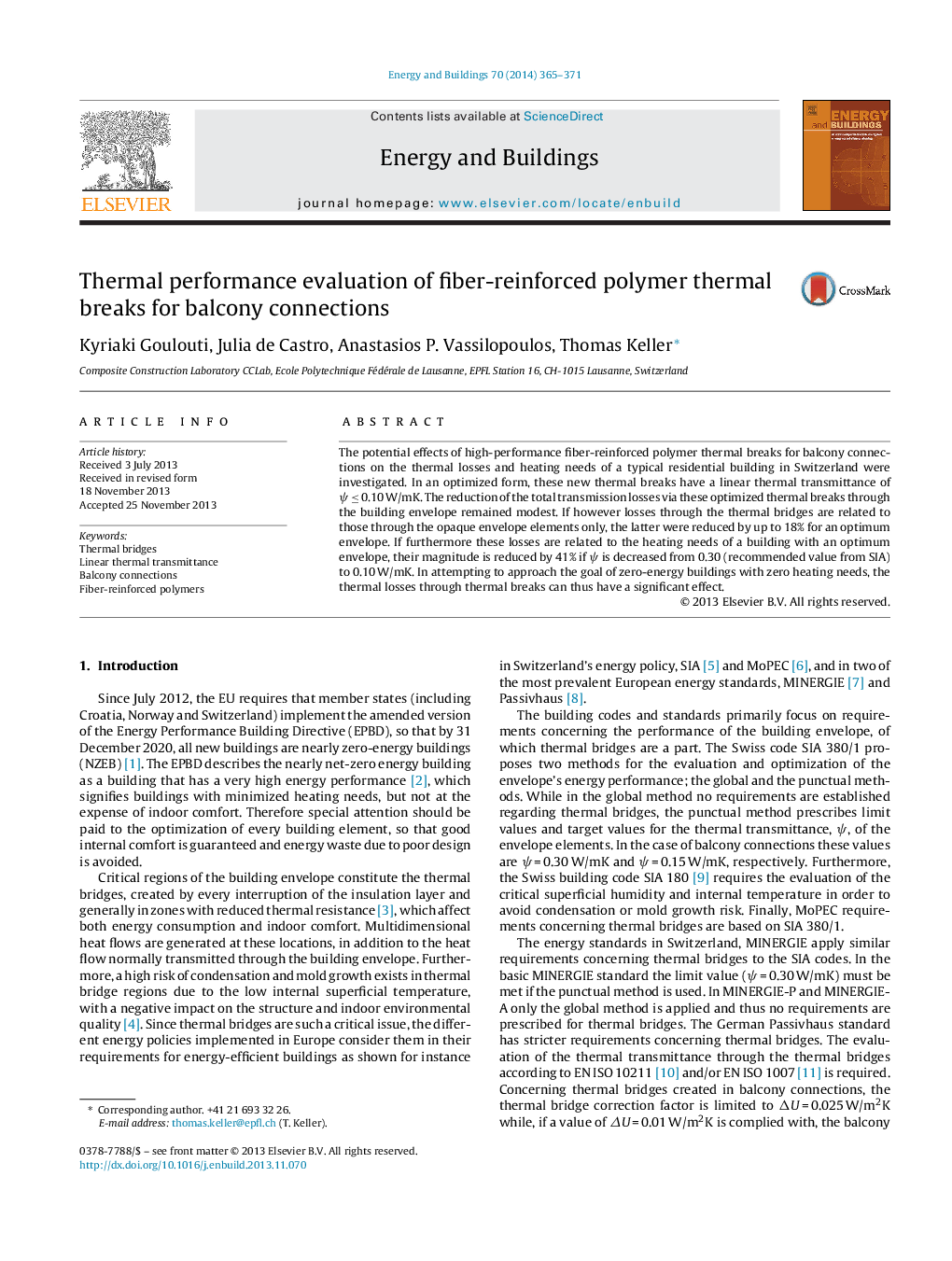| Article ID | Journal | Published Year | Pages | File Type |
|---|---|---|---|---|
| 263079 | Energy and Buildings | 2014 | 7 Pages |
•The thermal performance of fiber-reinforced polymer thermal breaks is investigated.•The new thermal breaks have a linear thermal transmittance <0.10 W/m2.•Related to the opaque building envelope, thermal losses can be reduced by 18%.•Heating requirements of a building with an optimum envelope can be reduced by 41%.
The potential effects of high-performance fiber-reinforced polymer thermal breaks for balcony connections on the thermal losses and heating needs of a typical residential building in Switzerland were investigated. In an optimized form, these new thermal breaks have a linear thermal transmittance of ψ ≤ 0.10 W/mK. The reduction of the total transmission losses via these optimized thermal breaks through the building envelope remained modest. If however losses through the thermal bridges are related to those through the opaque envelope elements only, the latter were reduced by up to 18% for an optimum envelope. If furthermore these losses are related to the heating needs of a building with an optimum envelope, their magnitude is reduced by 41% if ψ is decreased from 0.30 (recommended value from SIA) to 0.10 W/mK. In attempting to approach the goal of zero-energy buildings with zero heating needs, the thermal losses through thermal breaks can thus have a significant effect.
